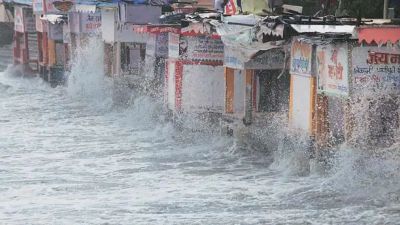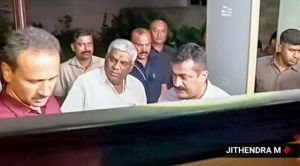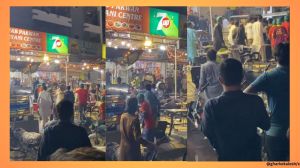- India
- International
Test for Covid template as Puri temple reopens
Forming the core of the strategy is a comprehensive vaccination drive for the temple’s more than 3,500 servitors and their families, working out a strict Covid protocol for entry to the temple, taking on board all stakeholders, and adapting to challenges unique to the temple, according to the top official responsible for the temple’s administration.
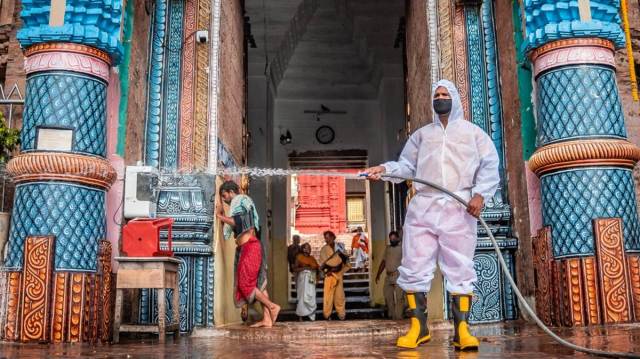 Sanitisation exercise outside Jagannath Temple in Puri on Sunday. (Photo courtesy: SJTA)
Sanitisation exercise outside Jagannath Temple in Puri on Sunday. (Photo courtesy: SJTA)WHEN THE Shree Jagannath Temple in Odisha’s Puri, one of the four pilgrimage centres for Hindus, reopens its doors after four months to devotees from across the nation on Monday, it will put to test a strategy that could possibly be a template for other religious shrines in these pandemic times.
Forming the core of the strategy is a comprehensive vaccination drive for the temple’s more than 3,500 servitors and their families, working out a strict Covid protocol for entry to the temple, taking on board all stakeholders, and adapting to challenges unique to the temple, according to the top official responsible for the temple’s administration.
The plan evolved in the months following the Rath Yatra in 2020, when the chariots of Lord Jagannath and his siblings Lord Balabhadra and Devi Subhadra were taken out without participation of devotees for the first time in recorded history, Krishan Kumar, Chief Administrator of Shree Jagannath Temple Administration (SJTA), told The Indian Express.
“The biggest challenge was taking out last year’s Rath Yatra, considering the circumstances,” he said. The pandemic was new, and the fear of the unknown was higher, said the 2002-batch IAS officer, who was appointed to the post around seven months before the pandemic struck.
It was left to the Supreme Court to clear the uncertainty surrounding the annual yatra, which in pre-Covid times attracted up to 12 lakh devotees on a single day.

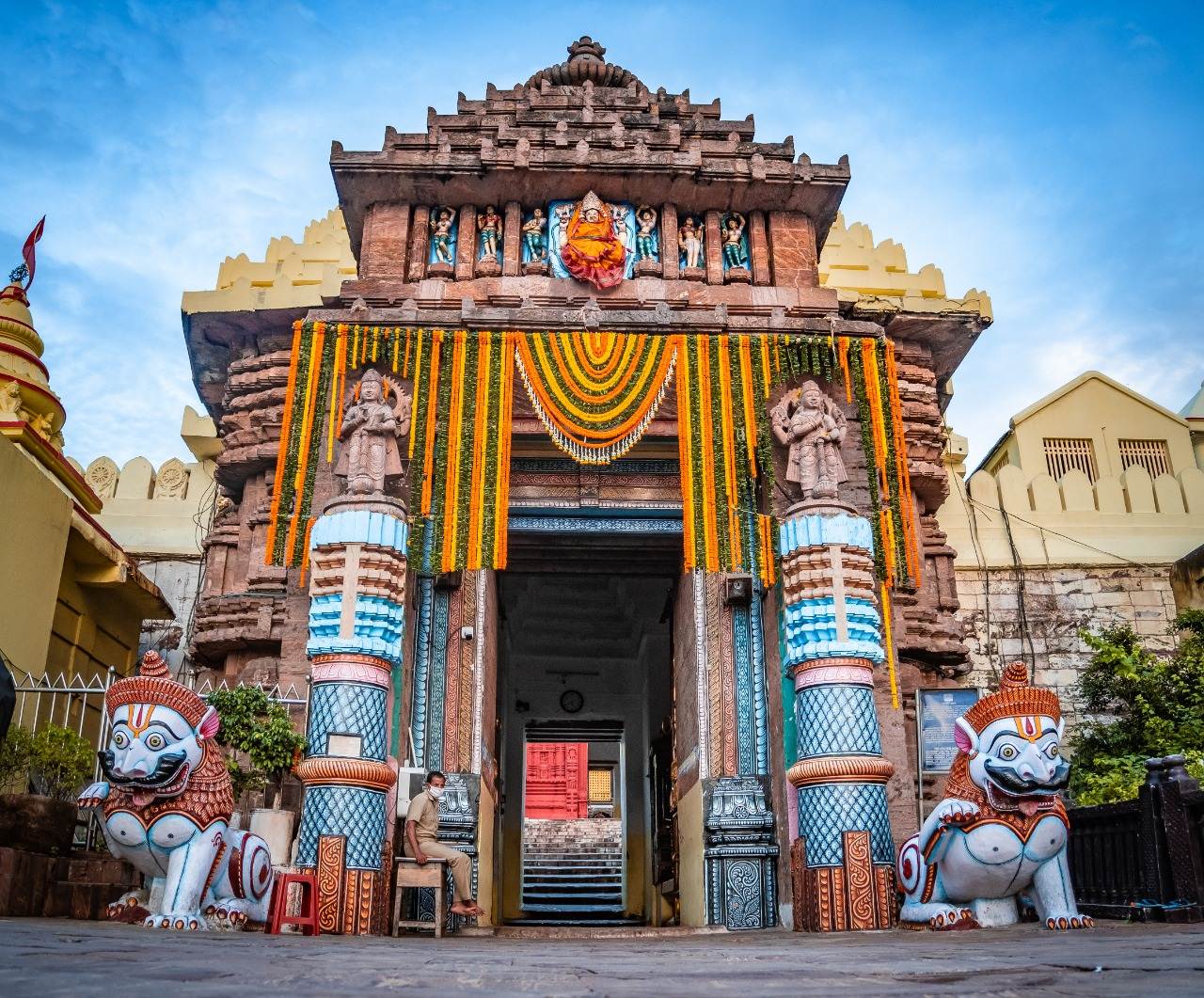 Following the second wave of the pandemic, when the temple was closed on April 24, months after reopening, the administration started working on the plan. (Photo courtesy: SJTA)
Following the second wave of the pandemic, when the temple was closed on April 24, months after reopening, the administration started working on the plan. (Photo courtesy: SJTA)
The court cleared the Rath Yatra, which involves at least two months of preparations when the chariots are built, and culminates in a nine-day visit of the deities from the 12th century shrine to their aunt’s home, a day before the date, with strict conditions of social distancing and no public participation — and a cap on the number of servitors pulling the chariots.
The chariots were rolled out of the temple by the servitors and brought back safely, giving the officials involved a rough draft of the strategy. Repeated screening of the servitors for Covid-19 was the first step, health and administration officials said. Vaccines were not in yet.
“Despite the biggest pandemic of the century, the Rath Yatra did not stop,” said Kumar.
“For the temple, this was most crucial,” said Janardhan Pattajoshi Mohapatra, the chief priest of Chattisa Nijog, the apex body of servitors, as an important entry in the Mandala Panji could not have been missed. The Mandala Panji, the Lord’s daily diary in which every event, big or small, at the temple is jotted down, has been maintained for more than 600 years without a break.
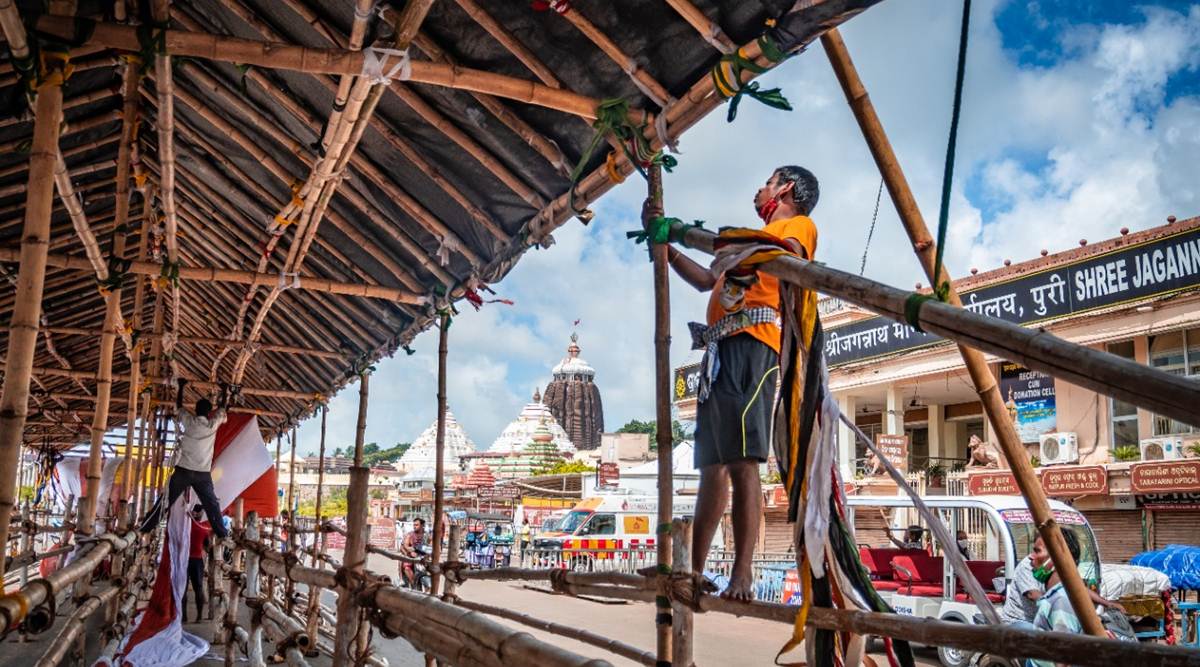 Before the pandemic hit, the Jagannath Temple saw a daily footfall of around 50,000, among the highest in India. (Photo courtesy: SJTA)
Before the pandemic hit, the Jagannath Temple saw a daily footfall of around 50,000, among the highest in India. (Photo courtesy: SJTA)
Following the second wave of the pandemic, when the temple was closed on April 24, months after reopening, the administration started working on the plan. Multiple meetings and communications later, all stakeholders, including health officials, agreed that the virus was here to stay and a way out had to be found to address religious sensibilities of the devotees. The temple had to reopen.
Before the pandemic hit, the Jagannath Temple saw a daily footfall of around 50,000, among the highest in India. In Odisha, Jagannath culture is considered a basic doctrine of life, one that promotes an all-inclusive approach. And “Jay Jagannath” is a form of greeting for the people, one that has been increasingly used in the political space in recent years.
With the vaccines came hope. This year, the Rath Yatra was conducted safely — again without public participation, but the administration was better prepared. Ahead of the yatra, RT-PCR testing was conducted on around 12,000 people, including district administration and temple administration officials, and around 5,000 police personnel who were engaged in the exercise. The city was made out of bounds for visitors.
But issues needed to be tackled before the temple could be reopened; people could be exposed, said officials engaged in the exercise for the past one year. An outbreak could cause havoc.
During meetings between the temple administration and district officials, several concerns were raised — including a set of challenges specific to the temple and its deity.
Since Lord Jagannath is a ‘living’ deity, the daily rituals involve different sets of servitors for each task — right from waking Him up and brushing His teeth to putting Him to bed at night. There are 19 mandatory and major rituals each day, and many more on special days.
 During meetings between the temple administration and district officials, several concerns were raised — including a set of challenges specific to the temple and its deity.(Photo courtesy: SJTA)
During meetings between the temple administration and district officials, several concerns were raised — including a set of challenges specific to the temple and its deity.(Photo courtesy: SJTA)
“Altogether, around 1,200 sevayats are involved in the daily rituals,” said Madhab Chandra Pujapanda, who represents a group of servitors in the temple’s managing committee headed by Gajapati Maharaj Dibyasingh Deb, the titular king, who is considered the top servitor.
Keeping the servitors safe was the primary concern, especially because they cannot wear face masks while performing the rituals, each of which involves dozens of them. Spreading awareness was the key, said health officials.
In May and June this year, Puri district was reporting an average of up to 250 Covid positive cases a day, said Dr Sujata Mishra, the Chief District Medical Officer. The numbers were high enough, and the response had to be adequate for the temple to reopen.
Awareness and vaccination drives were carried out at the doorsteps of servitors, Dr Mishra said. The fall in the number of cases in the district was encouraging. “Currently, the daily average [number of cases] is around 25-30 a day in the district,” she said.
But the fear of a third wave was still around.
“Covid broke the backbone of Puri’s economy,” said chief priest Pattajoshi Mohapatra, referring to the city’s ecosystem that depends on visitors. The servitors, who looked at offerings from devotees to supplement their income, had to fall back on their savings for survival last year.
With the servitors on board, an intensive exercise to secure them and their families was rolled out in March on a priority basis. “Till now, 99 per cent of the servitors and their family members in the 45-plus age category have taken both doses of the vaccine. In the 18-plus age category, 91 per cent have taken the first dose and 66 per cent both doses,” Dr Mishra said.
“Covid tests have been carried out on us multiple times this year,” senior servitor Rajat Kumar Pratihari said.
Temple officials said securing the servitors and their families was the primary concern. “Cans of sanitisers were provided free to the families,” said Kumar, for which the temple administration spent around Rs 2 crore. The servitors were also provided with health insurance.
The next move was to keep the confidence of the servitors, considering their financial hardships during the lockdown. The temple administration announced Rs 20,000 aid to each servitor family, increasing the relief it gave last year by Rs 5,000, said the servitors.
“The servitors had stood by the temple for hundreds of years. It was time for the temple to stand by them,” Kumar said.
With the servitors on board, and the number of cases dropping significantly across the nation, the district and temple administrations saw an opportunity to reopen the shrine — cautiously — for devotees. More consultations followed.
“The idea was clear — all or none,” said Kumar, referring to any suggestion on putting a cap on the number of devotees.
It was then decided at a meeting on August 4 to have a staggered reopening. For the servitors’ families on August 11, for devotees of Puri municipality area on August 16, and for all others on August 23 — with strict Covid protocols.
Entry will need a double vaccination certificate or a negative RT-PCR report not older than 96 hours, according to a list of SOPs released by the SJTA on August 11. Devotees can enter only between 7 am and 7 pm, and only on weekdays. Weekends were for sanitising the complex.
For the devotees of Puri, the reopening has been staggered — 30 municipal wards over five days. Once the temple reopens for devotees from outside Odisha, officials expect a footfall of fewer than 10,000 a day initially, and about 25,000 in two weeks. The challenges, Kumar said, include managing the servitor-devotee interface, without hurting sensibilities.
The servitors said the task will be uphill — social distancing may not be possible at all times. “We appeal to the devotees to maintain social distancing and remain safe,” said chief priest Pattajoshi Mohapatra.
Buzzing Now
May 04: Latest News
- 01
- 02
- 03
- 04
- 05











